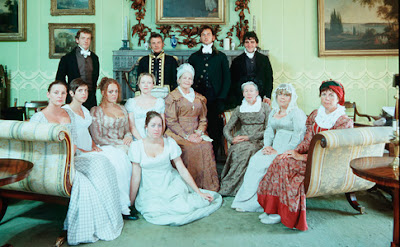 Okay, so it's pretty trite. The personalities are a little annoying, but nothing as bad as Real Housewives. And they don't talk much in detail about clothes (although they did show male stockings with padded calfs and how to twist your shirttail for a little extra help down *there*), but it was a fun show if you don't expect perfect historic accuracy. And one of the benefits of imperfect accuracy in their behavior is that the men go around coatless a good deal of the time, so you can see more of the clothes, and from all angles since reality TV isn't all close-ups and blocked shots. And the men's clothes are pretty darn awesome.
Okay, so it's pretty trite. The personalities are a little annoying, but nothing as bad as Real Housewives. And they don't talk much in detail about clothes (although they did show male stockings with padded calfs and how to twist your shirttail for a little extra help down *there*), but it was a fun show if you don't expect perfect historic accuracy. And one of the benefits of imperfect accuracy in their behavior is that the men go around coatless a good deal of the time, so you can see more of the clothes, and from all angles since reality TV isn't all close-ups and blocked shots. And the men's clothes are pretty darn awesome.It was an interesting watch, but I'm glad I got it from Netflix instead of buying it. And now I really want to go on an English house party vacation. And attend some sort of historic dinner party that only has candlelight, no electricity. But will we have to use chamberpots?








